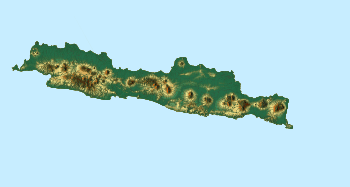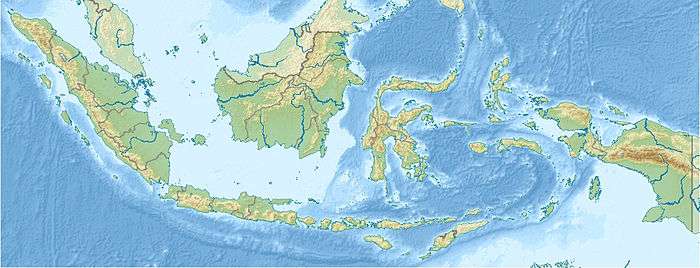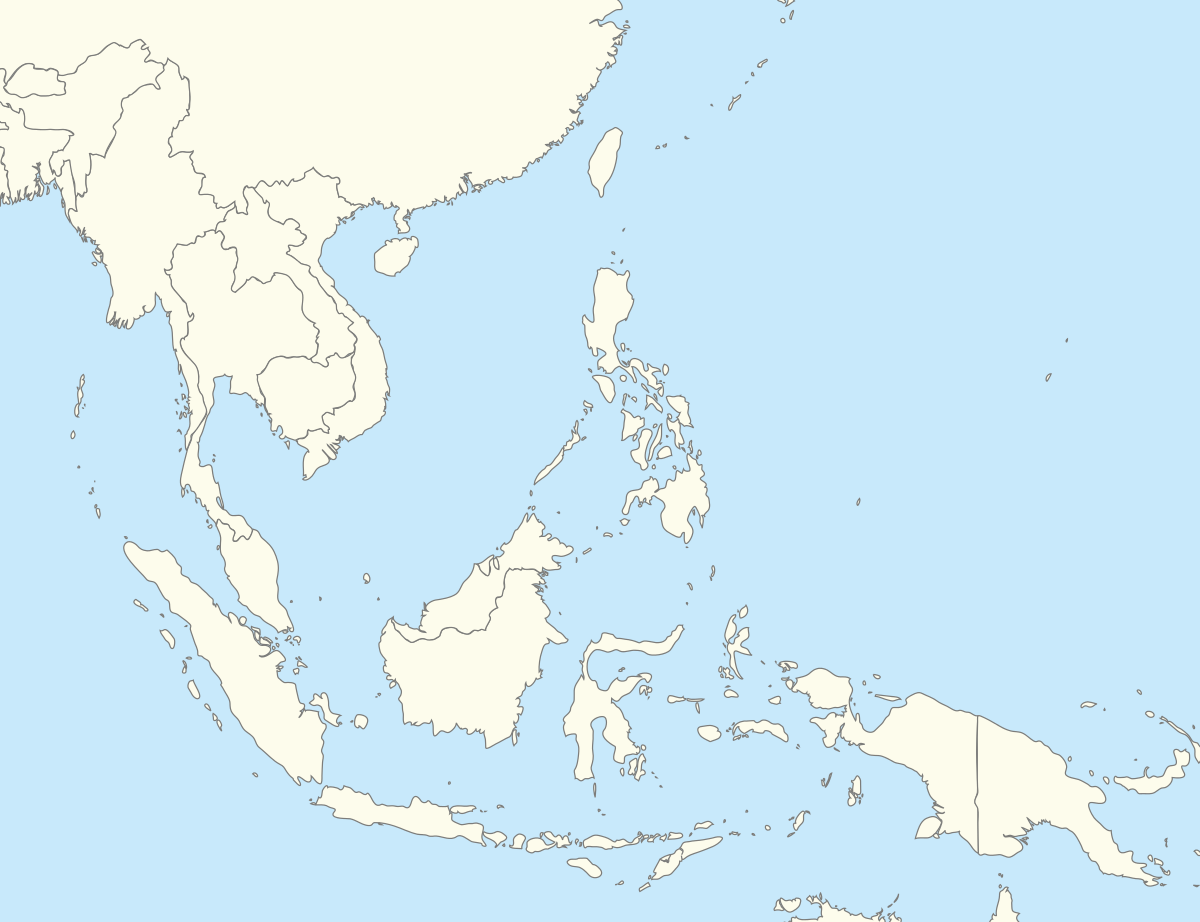Port of Tanjung Perak
| Port of Tanjung Perak | |
|---|---|
|
A passenger ship crossing Madura Strait | |
 Port of Tanjung Perak  Port of Tanjung Perak Port of Tanjung Perak (Java)  Port of Tanjung Perak Port of Tanjung Perak (Indonesia)  Port of Tanjung Perak Port of Tanjung Perak (Southeast Asia) | |
| Location | |
| Country |
|
| Location | Surabaya |
| Coordinates | 7°11′54″S 112°43′22″E / 7.19833°S 112.72278°ECoordinates: 7°11′54″S 112°43′22″E / 7.19833°S 112.72278°E |
| Details | |
| Opened | 1925[1] |
| Owned by | PT Pelabuhan Indonesia III |
| Type of harbor | Natural |
| Size of harbor | 1029 hectares |
| Land area | 545 hectares |
| Size | 1574 hectares |
| Draft depth | 16 m (52 ft) |
| Street access | Surabaya–Gresik Toll Road |
| Architect | Gerrit de Jongh[2] |
| Statistics | |
| Annual cargo tonnage | 33,227,848 (2011) |
| Annual container volume | 3.13 million TEU's (2014) |
| Passenger traffic | 9,044,499 (2011) |
| Net income | Rp2.01 trillion (CY 2017)[3] |
|
Website http://www.pelindo.co.id | |
Port of Tanjung Perak is the second busiest sea port in Indonesia, located at Surabaya, East Java. It is the main port for the eastern part of the island of Java.The port is accessed from the North through the Madura Strait, a 25 mile long, 100m wide and 9.5m deep channel between East Java and Madura Island. Because of its strategic position and the existence of surrounding advantageous hinterlands, the port constitutes the center of inter island shipping for Eastern Indonesia.[4] Container terminal of the port is known as Terminal Petikemas. The port is being dredged to 14 metres (46 ft) depth to serve 10,000 teus 5th generation ships to be finished in mid-2015, while 16 metres (52 ft) depth with width 200 metres (660 ft) can serve 15,000 teus or 7th generation ships to be finished in mid-2016.[5]
History
Before 20th century, oceangoing vessels from Surabaya did loading and unloading activities at Madura Strait and then freighted the cargoes by the means of barges and boats to Jembatan Merah (the first port in that time) situated along Kalimas River. Due to the increases of trade, cargo and transportation traffics, the facilities available at that port were inadequate.
In 1875 Ir. W. de Jonght planned to build Port of Tanjung Perak, but the plan was not realized due to shortage of funds. At the start of 20th century Ir. W.B. Van Goor submitted another proposal for the port. Physical construction of the port started in 1910. After completion of Tanjung Perak, port at Kalimas used for local purposes and Jembatan Merah abandoned gradually. An inter-island terminal was built in the port in 1983. A passenger ferry terminal was also built. International Container Terminal Petikemas was finished in 1992.[6]
Facilities
The port has 6 main terminals, multi-purpose terminals for conventional cargo handling, passenger terminal, RoRo and an international container terminal. Tugging, pilot, bunker, storage and shipyard services are provided. Since 2015 activities of the port is supported by Teluk Lamong Port Terminal, which is one of the most sophisticated port terminals in the world where the entire operating system is automated. Tanjung Perak Port is also equipped with dock facilities that can serve cruises both from domestic and abroad.
In May 2014 a new Teluk Lamong Green Sea Port began trial run operation with two Ship to Shore Crane units, five Automated Stacking Crane units, and one Automotive Terminal Tractor unit as an extension of Tanjung Perak port. The new facilities will primarily serve international shipping, predicted to be 7 ships every week, and any unused capacity will be used to support domestic shipping. The new facilities will use less paper and gas trucks to carry containers in the port area.[7] From January 2015, a dry bulk port will be built with piers with a projected finish in one year to accommodate up to 14 Logistex Warehouse System international ships. The port will be provided with 2 "Ship Unloader" units complete with conveyors and 8 hectares (20 acres) of warehousing.[8] The dry bulk terminal will occupy 26 hectares (64 acres), a supporting area of 36 hectares (89 acres) for a total capacity of 20,000,000 tonnes (20,000,000 long tons; 22,000,000 short tons).[9]
Gapura Surya Nusantara
New passenger terminal of the port is known as Gapura Surya Nusantara, which was opened in 2014.[10] The terminal is arguably the best of its kind in Indonesia, which is built with modern amnesties and facilities, similar to an airport terminal including passenger bridge, ticket counter, waiting lounge and food court.[11] The terminal is built with the concept of green architecture, environmentally friendly and energy saving technology. The sewage treatment plant (STP) of the terminal can recycle waste water which can be used for flushing toilets. The terminal consists of 3 floors covering an area of 16,120 square meters with a capacity of 4,000 passengers.[12] The terminal operates regular ship service to various ports of Indonesia, which is also serves as terminal for international cruise ships.[13]
See also
References
- ↑ "Dari Kalimas hingga Tanjung Perak | Majalah Dermaga". www.majalahdermaga.co.id. Retrieved 2018-09-30.
- ↑ "Dari Kalimas hingga Tanjung Perak | Majalah Dermaga". www.majalahdermaga.co.id. Retrieved 2018-09-30.
- ↑ PricewaterhouseCoopers. "Efficiency measures proven effective, Pelindo III profit soars 41%". PwC. Retrieved 2018-09-30.
- ↑ "Tanjung Perak".
- ↑ "Pertengahan 2015, Kapal Generasi Lima Sandar di Tanjung Perak". November 16, 2014.
- ↑ "History of Port Tanjung Perak".
- ↑ Miftahul Ulum. "Teluk Lamong Can Serve 7 International Ships". Retrieved May 8, 2014.
- ↑ "Pelindo III to start trial runs at Teluk Lamong port in May". Retrieved May 8, 2014.
- ↑ Titis Jati Permata (December 27, 2014). "2015, Dermaga Curah Kering di Terminal Teluk Lamong Dibangun".
- ↑ "Terminal Modern Tanjung Perak Resmi Beroperasi". Kompas. Retrieved 23 July 2018.
- ↑ "Presiden: Terminal Gapura Surya Nusantara Contoh Bagi Pelabuhan Lain". Republika. Retrieved 23 July 2018.
- ↑ "Diresmikan, Terminal Penumpang Gapura Surya Nusantara". Retrieved 23 July 2018.
- ↑ "Tanjung Perak sees 300% growth in travelers". The Jakarta Post. Retrieved 23 July 2018.